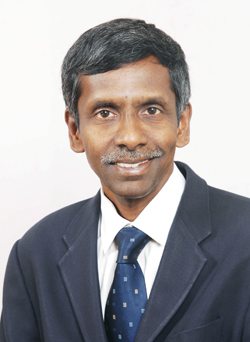Vasudevan Aghoramoorthy, vice president, Semiconductor and Systems, Wipro Technologies, spoke to Dilin Anand and Jalaja Ramanunni of EFY about Wipro’s presence in India, how local manufacturers are witnessing increased traction in the country and the latest projects they have been shaping for the industry.

Are design houses getting to develop localised innovations for the Indian market too?
The US, Japan and European countries such as Germany, France and the UK have been traditional locations driving demand for product engineering and mobility solutions (PE &MS). But now we are witnessing an increased traction in India and other emerging markets such as China. There is a large amount of the design implementation being done in India. We are working closely with designers to deliver solutions for the Indian market.
For instance, Wipro helped an Indian distributed infrastructure management service provider develop a data acquisition and communication system that collects and aggregates data from various transducers/sensors, measuring equipment, meters, etc, and sends the collected data over GPRS to the client’s servers for further processing. This product was developed by Wipro from scratch to specifications. Around 1600 units have been deployed in India, France, South Africa, Oman, Turkey, Nigeria and Lesotho for almost a year now.
What are the upcoming trends in the industry?
There are some common trends emerging across these different industries. One of them is the concept of seamless infotainment. Today, the consumer is interested in and looking for a lot of information. The information has to be seamlessly available across mobile devices such as mobile phones, tablets and laptops, and home devices such as TVs and set-top boxes. The entire infotainment value chain needs to work together to provide this seamless experience, wherein the users can access infotainment anywhere, at any time, and on any available device.
To deliver such solutions across the infotainment spectrum, one needs to understand different technologies, design products considering real usage scenarios, conceive products in their entirety, and put together building blocks within a stringent time frame, price and performance point. Creating such a product or solution can prove to be quite challenging.
Wipro is working on seamless infotainment simultaneously across all these verticals. For example, in healthcare, we are working on delivering seamless healthcare through remote patient monitoring. The information is captured from the patient and transferred to a service provider. A healthcare professional should be able to provide the right inference and diagnosis based on this information. The key part is that we are working on both developing the integrated device for the customer with chip design, system design and embedded software as well as providing the overall solution that meets the
customer needs.
What’s the key to be efficient in design and manufacturing?
We have an internal design flow called Wipro’s EagleWision for silicon and system designs. This helps us to adapt to new technologies, increase automation and enhance productivity. We also have an in-house product compliance lab—Tarang—that helps us provide faster turnaround and get products faster to the market for our customers. We have established strong ecosystem partnerships with IP companies, semiconductor companies and manufacturing companies to increase our efficiency.
What’s important when developing products for different use cases?
Today, semiconductors are bringing ‘smartness’ into an increasing spectrum of equipment—starting from a child’s toy to a complex base station of a wireless network. Across each requirement is a use case, i.e., how the end user would use the product. The form factor, user interface, middleware and silicon all need to be integrated to support and deliver the use case.
This environment is driving a significantly higher collaboration between R&D service providers and semiconductor companies to bring complimentary capabilities to envision the use cases of their joint customers and build platforms and solutions targeted at the use case.
What interesting market trends have you noticed in India?
Newer technologies are getting adopted faster in India now. We work on many new product developments that are meant to address the specific needs of markets like India. These cut across wireless infrastructure, high-performance computing, healthcare and industrial products. In the IT industry, Open Source software has become mainstream and is being increasingly deployed by IT solution providers.
Do you see Open Source hardware such as Arduino and Pi Raspberry going mainstream in the electronics design space too?
In the hardware domain, 70 per cent of the engineering cost is in verification. Customers may lose revenue, and market window may be lost due to bugs detected late in the development cycle. Hence we do not expect to see demand for Open Source picking up.
What technology trends should electronics design engineers keep track of?
Some good segments to work in the electronic design industry include industrial and automotive microcontrollers, wireless infrastructure segments, consumer digital TV, handheld devices and compute/storage infrastructure. Emerging segments like smart energy product development, medical telemetry application and high-end application processor development too hold a big promise. The top three trends to keep an eye out for are mobility, cloud and analytics. These are sure to revolutionise the electronics design space.






